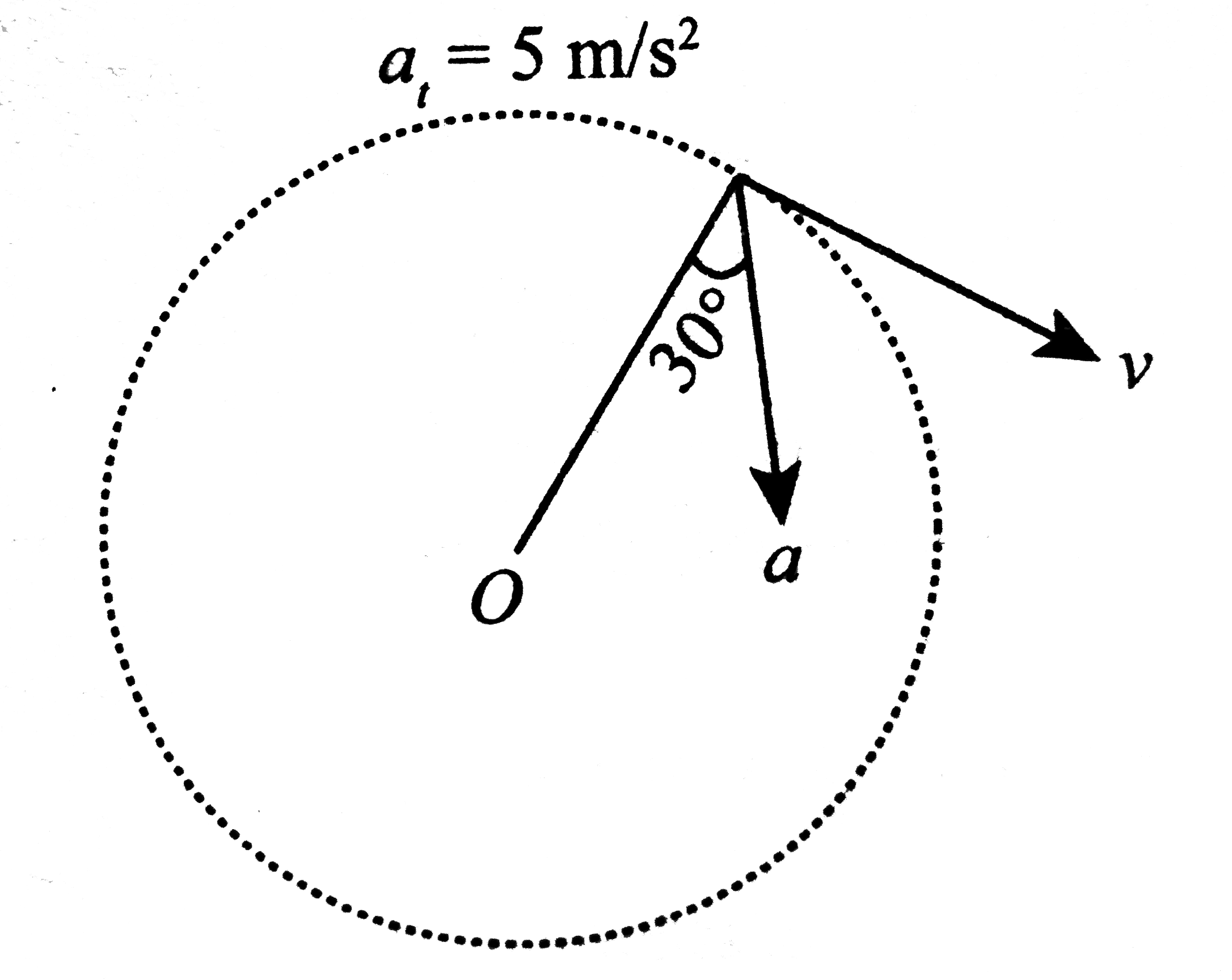In figure, what be the sign of the velocity of the point P', which is the projection of the velocity of the reference particle P.P is moving in a circle of radius R in anti-clockwise direction.

As the particle is moving in anticlockwise direction from A to P, the projection of velocity is towards O, i.e., along negative X-axis. Hence, the sign of the velocity of the point P is negative.
Topper's Solved these Questions
- OSCILLATIONS BOOK - MODERN PUBLICATIONCHAPTER - OSCILLATIONS EXERCISE - NCERT Exemplar Problems Subjective Question ( short Answer Type Questions )
6 Videos
- OSCILLATIONS BOOK - MODERN PUBLICATIONCHAPTER - OSCILLATIONS EXERCISE - HOTS (Higher Order Thinking Skills & Advanced Level)
11 Videos
- OSCILLATIONS BOOK - MODERN PUBLICATIONCHAPTER - OSCILLATIONS EXERCISE - NCERT Exemplar Problems Subjective Question (Multiple Choice Questions (Type-II))
7 Videos
- MOTION IN A STRAIGHT LINE BOOK - MODERN PUBLICATIONCHAPTER - MOTION IN A STRAIGHT LINE EXERCISE - CHAPTER PRACTICE TEST
16 Videos
- PHYSICAL WORLD BOOK - MODERN PUBLICATIONCHAPTER - PHYSICAL WORLD EXERCISE - Revision exercises (Long answer questions)
6 Videos
Similar Questions
What will be sign of the velocity of the point P′, which is the projection of the velocity of the reference particle P? P is moving in the circle of radius R in anticlockwise direction.

View SolutionTwo particles P and Q are rotating in the anticlockwise direction about a common center O in circles of radii 2m and 5m with linear speeds 63m/s. And 21m/s respectively. Calculate the relative angular velocity with reference to the common center O. What is the maximum angular velocity of P relative to Q in the clockwise direction and that in the anticlockwise direction?
View Solution
Knowledge Check
The tangential velocity of a particle making p rotations along a circle of radius π in t seconds is
A2πpt2B2πp2tCπ2p2tD2π2ptA particle starting from a point A and moving with a positive constant acceleration along a straight line reaches another point B in time T. Suppose that the initial velocity of the paticle is u > 0 and P is the midpoint of the line AB. If the velocity of the particle at point P is ν1, and if the velocity at time T/2 is ν2, then
Aν1=ν2Bν1>ν2Cν1<ν2Dν1=12ν2A particle is project d from point A with velocity u at an angle α with horizontal. In its parabolic path, at point P the particle is moving at right angles to its initial direction of projection. Its velocity at P is:
AutanαBucotαCucosαDucosecα
A particle A moves along a circle of radius R=50cm so that its radius vector r relative to the point O(figure) rotates with the constant angular velocity ω=0.40rad/s. Find the modulus of the velocity of the particle, and the modulus and direction of its total acceleration.

View SolutionWhat is the locus of a point of a plane, which is at a distance of p units from the circle of radius q units (p=q) ?
View SolutionFigure shows the direction of the total acceleration and velocity of a particle moving clockwise in a circle radius m at an instant of time. Tangential acceleration this instant is 5m/s2. Which of the following statements is not correct?

View SolutionThe figure below is a representation of a simple harmonic progressive in the negative X-axis, at a given instant. The direction of the velocity of the particle at stage P in the figure is best represent by the arrow.

View SolutionA proton and an alpha particle are separately projected in a region where a uniform magnetic field exists. Their initial velocities are perpendicular to direction of magnetic field. If both the particles move around magnetic field in circles of equal radii, the ratio of momentum of proton to alpha particle (pppα) is
View Solution
